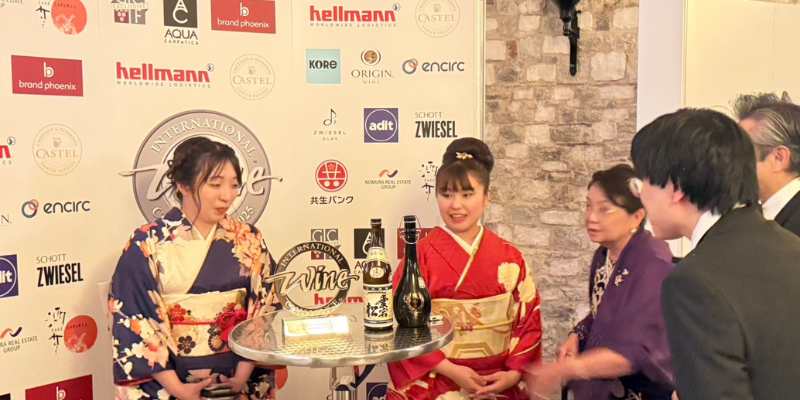Japan's sake brewing industry displayed notable trends and changes, reflecting shifts in consumer preferences and brewing practices.
Key Statistics:
- Sake Breweries: 1,168 breweries operated, down by 39 from the previous year. Niigata had the most breweries (85), followed by Nagano (75) and Hyogo (60).
- Production Volume: 340,496 kl of sake was produced, a 10.8% decrease from 2018. Premium sake production accounted for 148,832 kl, down 6.9%. Within premium sake, Junmai types (without added alcohol) gained popularity.
- Regional Sales Leaders: Hyogo, Kyoto, and Niigata contributed nearly half of the domestic sales volume. Hyogo led with 107,477 kl sold.
Ingredients and Brewing Trends:
- Rice Usage: 205,662 tons of brown rice were used, with an average polishing ratio of 63.2%. Brewers are increasingly favoring less-polished rice, enhancing flavor profiles.
- Alcohol Additions: Distilled alcohol usage fell by 13.3%, indicating a shift toward Junmai sake.
- Pressing and Alcohol Content:
- Average kasubuai (pressing ratio): 28.2%
- Average undiluted alcohol content: 19.2%
Japanese Sake Breweries
How many sake breweries are in Japan?
A reasonable question to ask is how many sake breweries are out there in Japan. It is not the same number from a couple of decades ago, but according to the investigation by the National Tax Agency, in the 2019 brewing season, over 1,168 breweries produced sake. This is 39 less than the previous year, indicating the continuous shrinkage of the sake brewing industry.

Out of the producing sake breweries, 1,005 produced Junmai sake and 1,082 brewed Junmai Ginjo sake. The number of sake breweries that are using small amounts of added alcohol is 805 breweries for Ginjo sake, followed by 731 Honjozo sake producing breweries. 792 sake breweries are producing the non-premium sake (“Futsushu”).

Interestingly the sake production sites which are producing Junmai (no addition of distilled alcohol) productions have been quite stable over the last 5 years, whereas the distilled alcohol added products have seen a decline in the same time period.
What prefecture has the most sake breweries?
According to the report of the National Tax Agency, the Niigata prefecture with its mountains and coastline is home to the most sake breweries in Japan. Over 85 sake breweries in the region, which are famous for their characteristic “Tanrei-karakuchi” style. This style of sake tends to be rather light and dry. The second and third place goes to the neighboring prefecture Nagano and the Hyogo prefecture.
- Niigata Prefecture: 85 sake breweries
- Nagano Prefecture: 75 sake breweries
- Hyogo Prefecture: 60 sake breweries
Japanese Sake Production Volume
How much sake is produced every year?
In 2019, the total volume of sake produced (alcohol equivalent of 20 degrees) was 340,496 kl (down 10.8% from the previous year). Of this total, 148,832 kl (down 6.9% from the previous fiscal year) was produced in the premium sake category.
Compared to the previous year, the production volume of premium sake was down 2.3% for Junmai sake, down 6.5% for Junmai Ginjo, down 10.3% for Ginjo, and down 12.5% for Honjozo. The ratio of premium sake, especially Junmai Ginjo, to total production volume is growing.

In 2019 the top three prefectures in terms of sales volume in Japan are Hyogo, Kyoto, and Niigata. The total sales volume of these three prefectures accounts for 49.9% of the total domestic sales volume and the total sales value of these three prefectures accounts for 42.2% of the total domestic sales value.
- Hyogo Prefecture: 107,477 kl (58,568 million JPY)
- Kyoto Prefecture: 64,804 kl (36,566 million JPY)
- Niigata Prefecture: 40,345 kl (37,481 million JPY)
Japanese Sake Ingredients
How much rice is used to make sake?
In the 2019 sake brewing year (mid-2018 to mid-2019), 205,662 tons of brown rice (down 9.4% from the previous year) were used for sake’s main raw ingredient, which, after polishing, resulted in 132,282 tons of white rice (down 9.2%) actually being used for sake production in Japan.

The usage of brown rice to white rice results in the industry average rice polishing ratio (“Seimaibuai”) of 63.2% (63.0% in the previous year). The average rice polishing ratio has remained almost the same, but the ratio for Junmai Ginjo sake is back on a slightly increasing curve this year. In recent years more and more breweries are going back to bring out the rice flavors and to give the sake character by brewing with less polished rice.
How much alcohol is used to make sake?
The volume of alcohol used for sake production in 2019 (converted to 100% alcohol) was 18,559 kl (down 13.3% from the previous year) In terms of alcohol per ton of white rice, the volume was 140.3 kl (down 4.5% from the previous year), showing a downward trend. This indicates that more and more breweries are brewing sake without the addition of distilled alcohol (i.e. Junmai type sake).

Other sake brewing facts in 2019
The industry average values of some other sake brewing parameters are given below:
- Average alcohol content (before adding water): 19.2%
- Average Sake Meter Value: +1.4
- Average polishing ratio (“Seimaibuai”): 63.2%
- Average pressing ratio (“Kasubuai”): 28.2%
The average alcohol content designates the alcohol content measured before dilution with water. When bottled the sake usually has an alcohol content of 15-17%.
The “Kasubuai” indicates how much “Sakekasu”, the remaining rice particles in the pressed fermentation mash, are left. The lower the more sake was generated during the pressing process. For “Futsushu” (basic sake) the ratio is on average 21.5%, whereas for more premium sake like Junmai Ginjo types the average ratio is over 37%, meaning that for the same amount of Ginjo sake more ingredients are necessary as roughly only 60% find their way in the actual end-product.
Conclusion
In the last 5 years, the number of sake producing breweries (1,168 breweries) and the overall production volume of sake (340,496 kl produced) showed a downward trend. Nevertheless, the production of premium sake (148,832 kl produced) remains relatively constant.
Looking at the sake product ingredients, on average less distilled alcohol is added before the pressing of the fermentation mash, as more and more brewers tend to lean towards Junmai sake types. The average rice milling ratio remained almost the same, but the milling ratio of Junmai Ginjo sake is increasing again. The overall trend might hint towards a renaissance of Junmai sake with slightly coarsely polished rice. These types of sake tend to be richer with more intensive flavors, which can potentially be better paired with western cuisine.
If you are interested in expanding your product portfolio with unique Japanese sake from sake breweries, get in touch with us right away.







